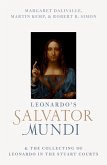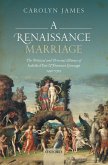The Salvator Mundi is the first Leonardo painting to be discovered for over a century. Following its re-emergence, it played a leading role in the landmark Leonardo exhibition at the National Gallery in London in 2011, after which it was purchased by a Russian oligarch. In 2017 it was auctioned by Christie's in New York, fetching the world record price of $450m, and now forms part of the collection of Louvre Abu Dhabi. The Salvator Mundi may be seen as the devotional counterpart to the Mona Lisa, having an extraordinary, communicative presence. The artist has reformed the very traditional subject matter in a number of ways. The elusiveness of Christ's expression suggests his spiritual origins beyond the world of the senses. The traditional sphere of the earth has been transformed into a rock-crystal orb and signifies a crystalline sphere of the heavens. In addition to its spiritual dimension, the image exploits Leonardo's optical knowledge and his growing sense of the illusiveness of seeing. Only the blessing hand is in reasonably sharp focus, with his features softly veiled. The scintillating curls of his hair are characterised in line with his theory that the physics of the curling of hair is analogous to vortex motion in water. This book looks at evidence of Leonardo's Salvator Mundi in the collections of Charles I and Charles II. It explores the appraisal of works by Leonardo at the Stuart courts, and proposes that how works attributed to Leonardo were first encountered and understood in seventeenth-century Britain would shape the wider evolution of Leonardo as a cultural icon. This volume gives a dramatic first-hand account of the modern-day discovery of the painting, from its purchase in a minor New Orleans auction house, to the cleaning of the picture that would disclose it as Leonardo's startling original, and the research processes that would uncover illustrious and obscure former owners. The book presents the definitive study of the new masterpiece.
Dieser Download kann aus rechtlichen Gründen nur mit Rechnungsadresse in A, B, BG, CY, CZ, D, DK, EW, E, FIN, F, GR, HR, H, IRL, I, LT, L, LR, M, NL, PL, P, R, S, SLO, SK ausgeliefert werden.









